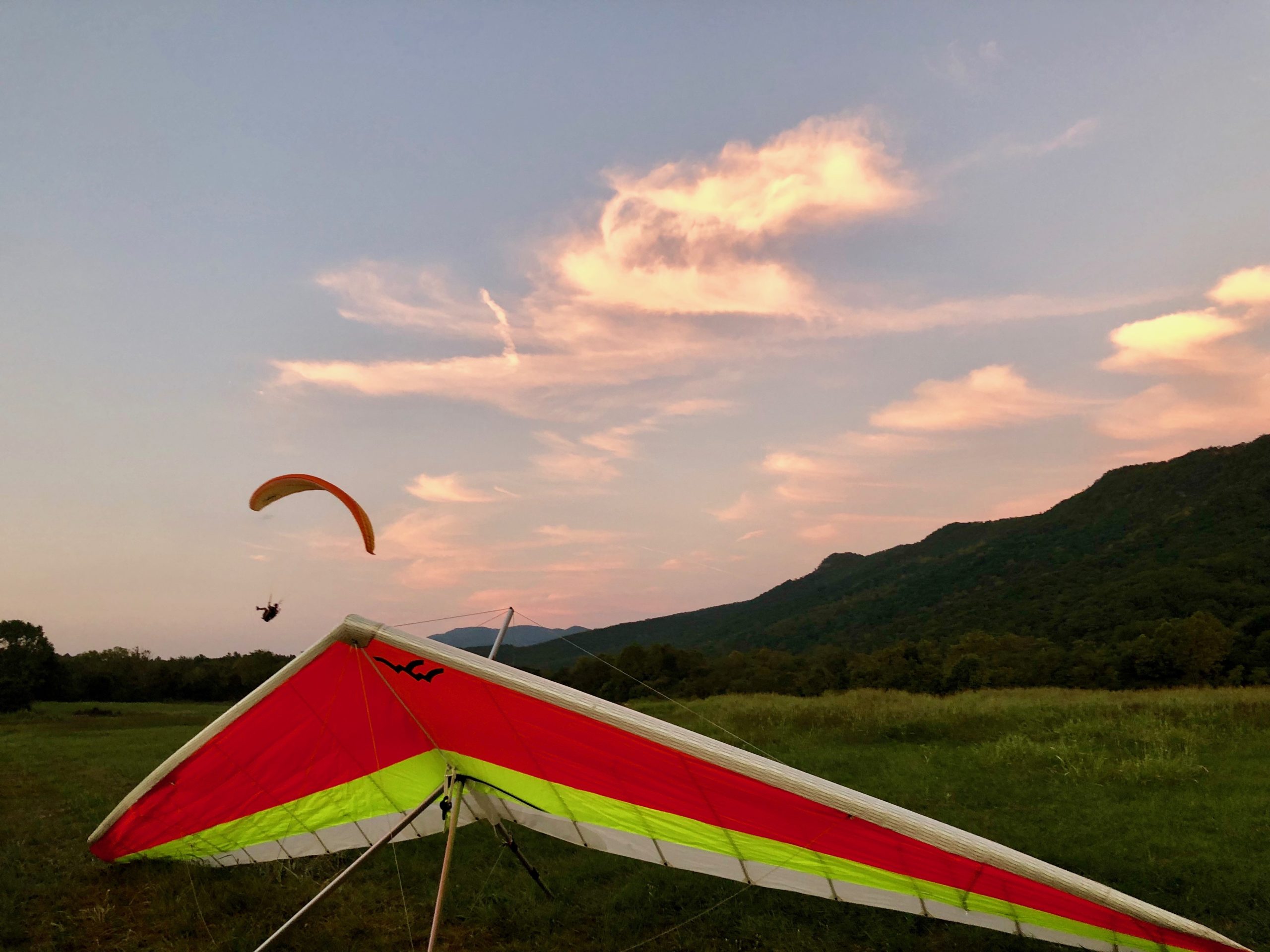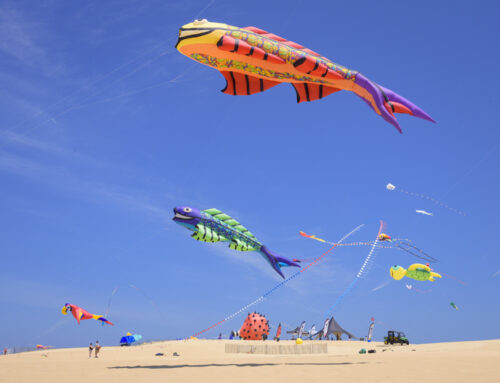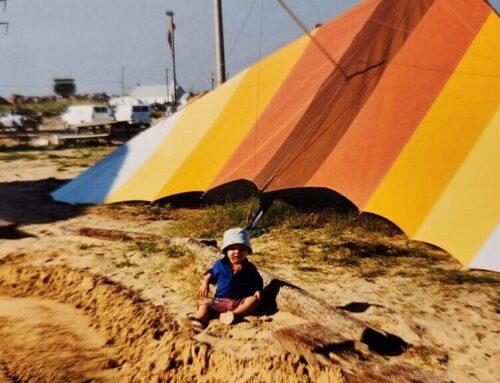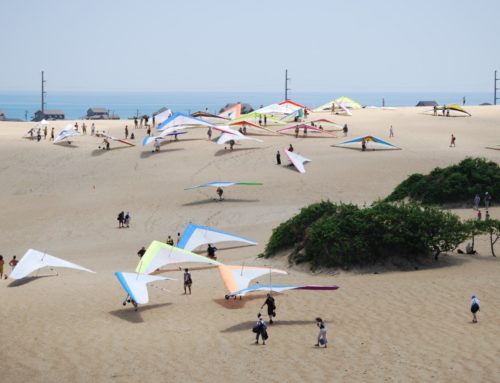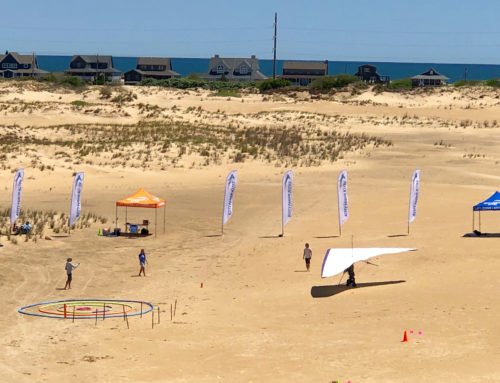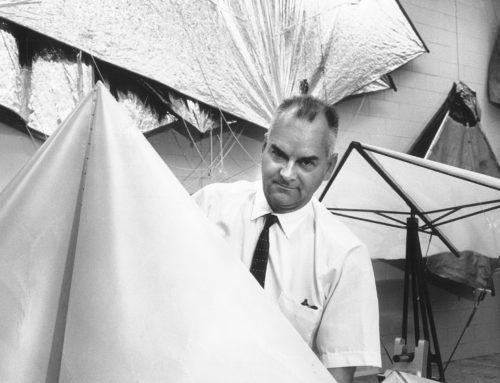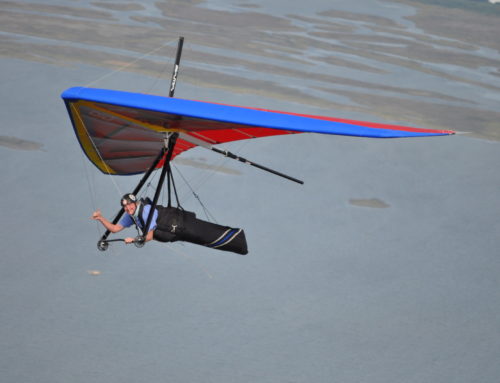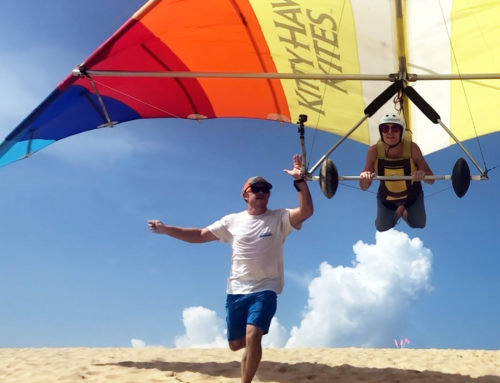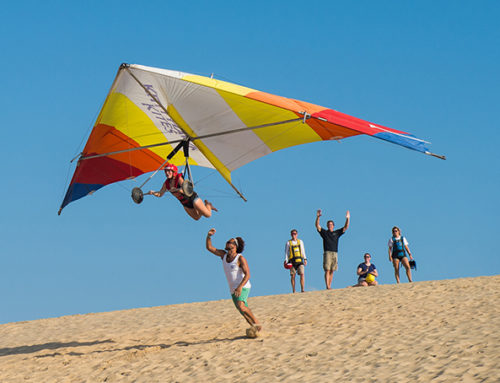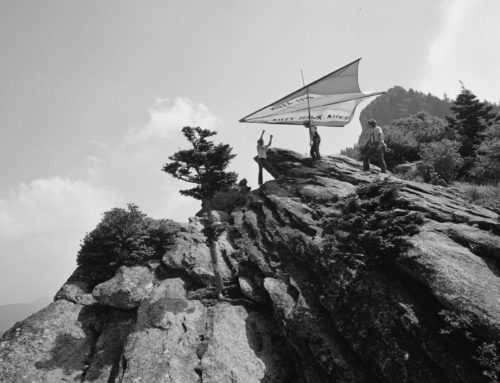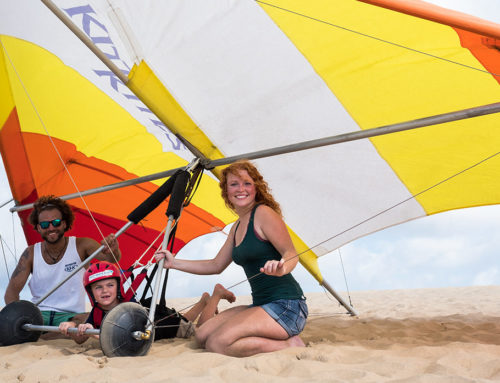On Sunday, June 14th, our Outer Banks hang gliding school assistant manager, Billy Vaughn welcomed paragliding pilot Joe Seitz of Feather Light Flight to our bi-weekly zoom discussion and Q&A. During this session, we covered the topic of staying current. If you missed it, keep reading!
Keep it Current, Keep it Safe
Unlike other forms of aviation, hang gliding and paragliding are largely self-regulated. And our community wants to keep it that way. In order for us to do that, we have to stress the importance to safety during every flight. Billy and Joe compiled this list to help pilots keep their skills up to date.
- Don’t lose touch with the practice hill.
Your flight location may refer to it as the training hill, but that doesn’t mean you can’t continue to use it. Especially after a season away from your wing, the practice hill can be a great way to warm back up and refresh your skills. The practice hill is also a great place to bring a friend and introduce them to the thrill of free flight. - Practice! Practice! Practice!
Take advantage of easy winds to rebuild and perfect your skills. For a challenge, try to fly slowly. For paragliders, kiting is a great practice exercise as well. As the old adage says, “Don’t practice until you get it right. Practice until you can’t get it wrong.” - Match your skills with the situation.
When returning to flight after being away for a while, evaluate where your skills are and what you are comfortable with. Don’t jump out into winds that are too strong for your ability. Also, realize that your skills may differ from wing to wing. For example, a high-performance wing will not magically increase your skill level. - Take it slow while recovering from an injury.
Make sure you take the time to test out your “new equipment.” It’s better to wait until you have fully healed than to risk worsening the injury or putting yourself into a dangerous situation. Different injuries will affect your flights differently. For example, leg or foot injury will affect your launches and landings. Or a shoulder injury may affect your ground handling and ability to pull your parachute should you need to. When you do return to the hill after an injury, perform an extra thorough pre-flight check.
Overall, it’s most important to keep yourself safe to fly another day. Your instructor or mentor is a great resource to help you evaluate the situation, but only you can truly know your own skill level. Your comfort zone may just save your life. Morningside Flight Park manager, Heath Woods uses a tool known as the rule of sevens. When practicing new skills, rate your comfort level with the skill on a scale of 1 to 10 (1 being very comfortable and 10 being very uncomfortable), and don’t surpass a 7. As you practice, you will become more comfortable and new skills that used to terrify you will become more manageable.
Questions & Answers
- How do you get back to your previous skill level after being away?
Go back to the practice hill. Realize that you are never truly done learning and you have the option to take a refresher lesson or book an instructor for one-on-one instruction. Or reach out to a more advanced or local pilot that’s more comfortable with the flight area. And always be receptive to feedback. - How do you vet feedback?
Trust your gut. Human intuition can often tell when someone is giving us bad information or advice. Watch how they fly. If they take a lot of unnecessary risks or fly dangerously, they may not have the best information to pass along. Also watch how other advanced pilots interact with them, if they’re around. In most cases, the free flight community is close-knit and wants to promote safe flying and pilots that fly safely so that we can continue to be self-regulated. - How do you stay current on the ground, either from an injury or during the winter?
- We are strong proponents of visualizing. Take a mental flight, from your pre-flight check to launch to landing. Walk through the entirety of a flight in your head, including different scenarios.
- Plan a flying trip. Either go to a location that is currently open or get a plan in the books to go flying when your season starts.
- Pick up a new skill that puts you back in the learning headspace. If you hang glide, try a paragliding lesson or vice versa. Kiteboarding is another sport that utilizes the wind and similar concepts to travel through the air (and water).
- Fly a remote control glider. While not exactly the same, you can apply some of your flight concepts to flying a smaller glider in the wind you have around where you live.
- Take a clinic. Several clubs and schools offer advanced or refresher clinics throughout their seasons. A landing is highly recommended for all pilots.
- Offer to drive. Whether or not you’re injured, drivers are always needed and appreciated. This gives you the opportunity to watch other pilots launch and involve yourself more closely in the community.
- How does aging change your skills and currency?
Just like any other sport, aging makes us more prone to injury. It also means that injuries can take longer to heal. The most common problem that older pilots run into is the launches and landings become more difficult. For hang gliders, you can attach landing gear. It can make mountain launches more interesting by having to roll off the mountain, or you can pursue aerotowing. - What is the typical longevity for these sports?
There are many pilots in their late 70s and some in their early 80s. Of course the earlier you start the sport, the longer you’ll be involved. But a large part of the free flight community is currently in the Gen X and Boomer generations. - How do you face the stigmas regarding currency in the community?
- Do your homework. If you are as prepared as you can be about your location, glider, weather conditions, and personal skill, then you will be sure to make the best decision for yourself and they type of flying you want to do. Don’t succumb to the pressure to perform if you aren’t confident on launch.
- Don’t let other pilots make the decision to launch for you if you aren’t comfortable with the conditions. It can be intimidating to stand on the ramp waiting for the right time to take off and have a line of pilots waiting behind. But your safety is more important than their impatience. And don’t forget that you can step back and let other pilots launch before you. Remember: launching is optional, but landing is mandatory.
- And as stated before, a high-performance wing isn’t going to improve your personal skill. Don’t step up to one before you’re ready for it. The goal of flying is not to “level up” to the next wing. The goal is to have fun and stay safe.
Next Session
Check out our upcoming Free Flight Q & A topics. You can also find links to our previous session summaries on that page.
